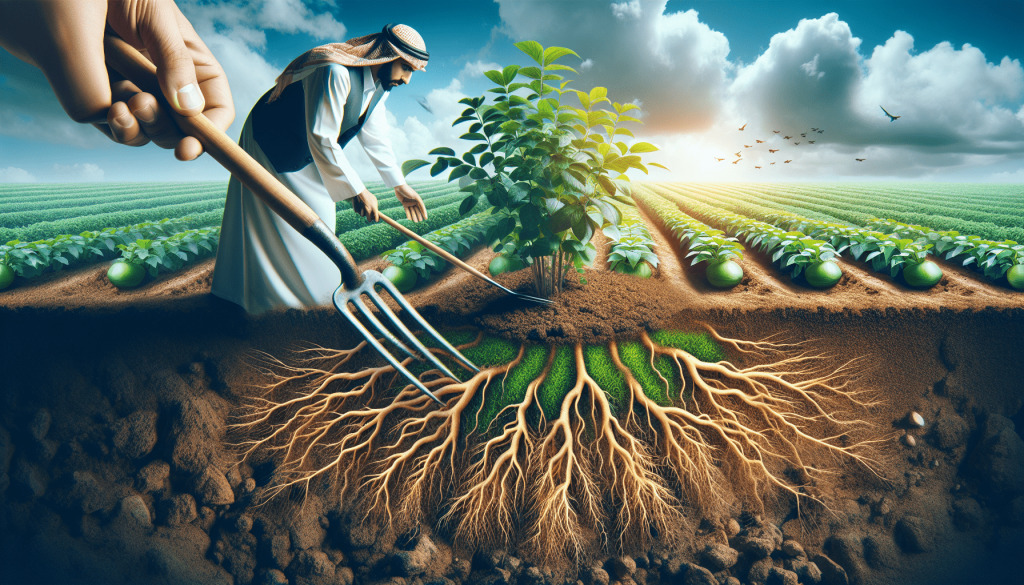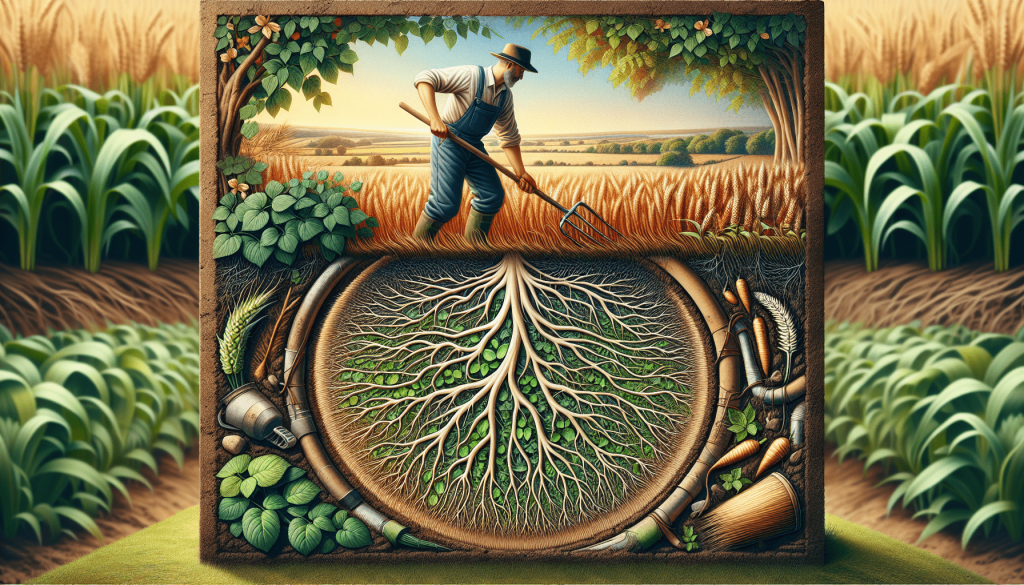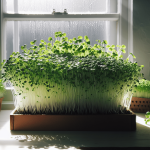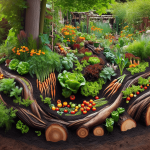This post may contain affiliate links. As an Amazon Associate, we may earn commissions from qualifying purchases.
In the article, “What Are Some Effective Methods For Preventing Soil Compaction,” you’ll discover practical and easy-to-implement strategies to keep your soil healthy and aerated. You will learn about various techniques, such as proper machinery use, crop rotation, and maintaining organic matter, that can help you prevent the hardening of your soil and ensure a thriving garden or farm. The insights provided will arm you with the knowledge necessary to enhance soil quality, leading to better plant growth and a more sustainable environment. Have you ever found yourself gazing at your garden or farmland, wondering why your plants aren’t thriving as they should? Chances are, the culprit might be soil compaction. Let’s be honest, when you talk about soil, most people imagine mud pies from childhood, or the gunk that clings to your shoes after a hike in the rain. But soil is a remarkably intricate world, teeming with life and vital to just about everything that makes modern life possible. So let’s dive into the nitty-gritty world of soil compaction and explore some effective methods for preventing it.
What Is Soil Compaction?
First, let’s get on the same page. Soil compaction occurs when soil particles are compressed, reducing the pore space between them. Picture it as trying to fit a round peg in a square hole, over and over again, until the once-loose and airy soil becomes a tightly packed slab. When soil gets compacted, water, air, and nutrients have a harder time penetrating it, turning what was once fertile ground into something more akin to a parking lot. Not exactly the stuff thriving gardens or bountiful harvests are made of.
Causes of Soil Compaction
So what leads to this soil nightmare? A number of activities contribute to soil compaction, and being aware of them is your first line of defense:
- Heavy Machinery: Tractors, trucks, and other heavy equipment can compact soil, especially when it’s wet.
- Foot Traffic: You’re not off the hook either. Regular foot traffic and livestock movement can also lead to soil compaction.
- Inadequate Soil Management: Over-tilling or plowing at the same depth year after year can compact layers of soil.
- Natural Forces: Even Mother Nature can play a role, with natural settling and rain impacting the soil.
Impacts of Soil Compaction
Soil that’s as tough as concrete is a problem for plants, but let’s delve deeper into the gritty consequences of soil compaction:
- Root Growth Restriction: Imagine trying to stretch out on a mattress made of rocks. Roots face similar struggles in compacted soil.
- Water Drainage Issues: Compacted soil has reduced pore spaces, meaning water pools on the surface instead of nourishing the roots.
- Nutrient Uptake Problems: It’s challenging for plants to access vital nutrients when their root systems are compromised.
- Reduced Soil Microbial Activity: Healthy soil is full of microorganisms. Soil compaction can squash these essential life forms.

Effective Methods For Preventing Soil Compaction
Now let’s put on our gumboots and explore some effective methods to prevent soil compaction. You can take a multifaceted approach to not just prevent compaction but foster a healthier soil ecosystem.
Avoid Over-Tilling
While tilling has its merits, it can also lead to soil compaction over time if done excessively. Over-tilling disrupts soil structure, making it more susceptible to compaction. Try these techniques instead:
- No-Till Farming: This method reduces soil disturbance, maintaining organic matter and better soil structure.
- Strip-Till: Tilling only in narrow strips where seeds are to be planted leaves the rest of the soil undisturbed.
Ground Cover and Crop Rotation
Using ground covers and practicing crop rotation can do wonders for preventing soil compaction:
- Cover Crops: Plants like clover and rye can protect the soil from heavy rains and provide organic matter when they decompose.
- Crop Rotation: Alternating crops can prevent the soil from becoming compacted. For example, rotating between deep-rooted and shallow-rooted plants can aerate the soil naturally.
Mechanical Aeration
When prevention isn’t enough, mechanical aeration can come to the rescue. Think about giving your soil a good deep tissue massage:
- Core Aerators: These machines remove small cores of soil, allowing for better water and air penetration.
- Spike Aerators: These puncture the soil to create spaces for air and water.
| Type | Pros | Cons |
|---|---|---|
| Core Aerators | Better long-term results | Can be more expensive |
| Spike Aerators | Easier to use | May cause further compaction if overused |
Controlled Traffic Farming
Simply put, this involves managing where machinery travels to minimize soil disturbance:
- Permanent Traffic Lanes: Designating specific lanes for machinery reduces the area of compacted soil.
- GPS Technology: Advanced GPS tech can ensure machinery stays within those lanes, effectively managing soil compaction.
Organic Matter and Mulching
Organic matter is like a superhero for your soil:
- Composting: Regularly adding compost can improve soil structure and make it less prone to compaction.
- Mulching: Mulch can prevent surface compaction by protecting the soil from direct impact and maintaining moisture levels.
Limiting Foot Traffic
Reducing foot traffic is another effective step:
- Pathways: Designate specific walkways in your garden to limit the area that gets compacted.
- Fencing: In larger areas, use fencing to prevent livestock from roaming freely and compacting the soil.
Soil Amendments
Adding substances like gypsum or lime can help break up compacted soil:
- Gypsum: Helps to loosen heavy clay soils and improve water infiltration.
- Lime: Can balance soil pH, making it more favorable for plant growth and reducing compaction.
Monitoring Soil Moisture
Keeping an eye on soil moisture levels is crucial:
- Moisture Sensors: These can help you track soil moisture levels and avoid working on the soil when it’s too wet, a prime condition for compaction.
- Smart Irrigation Systems: Can provide water only when needed, reducing the chances of over-saturating the soil.
Encouraging Earthworms and Soil Fauna
Let nature do some of the hard work for you:
- Earthworms: These creatures aerate the soil as they tunnel through it, naturally reducing compaction.
- Beneficial Soil Fauna: Encourage a rich soil ecosystem by avoiding pesticides and providing organic matter.
Long-Term Soil Health Strategies
Prevention is a constant, ongoing mission. Think of it like brushing your teeth—you can’t just do it once and expect pearly whites for life. Developing strategies for long-term soil health can create a compaction-resistant environment:
Regular Soil Testing
Understanding your soil’s health is the first step:
- Nutrient Levels: Get a sense of what nutrients your soil might be lacking.
- Soil Texture: Knowing whether your soil is more sandy or clayey can inform how you tackle compaction.
Building Organic Matter
Continuously adding organic matter to your soil can sustainably improve its structure:
- Green Manure: Grow crops specifically to be plowed back into the soil.
- Organic Fertilizers: Use natural fertilizers that break down to improve soil structure.
Adopting Agroforestry Practices
Integrating trees and shrubs into your farming system can have multiple benefits:
- Enhanced Soil Structure: Roots of trees and shrubs create more channels for air and water.
- Wind Protection: Reducing wind speed across the soil surface can help prevent compaction from erosion.

Common Mistakes and How to Avoid Them
Of course, no method is foolproof. If you’ve read this far, you’re probably committed to giving your soil some TLC. So let’s go over some common pitfalls and how you can avoid them.
Over-Reliance on One Method
No single technique will solve soil compaction entirely. It’s all about balance:
- Diversify Your Approach: Don’t just rely on mechanical aeration; integrate organic matter, controlled traffic, and other methods.
Ignoring Inspection and Maintenance
Neglecting your soil’s health over time can lead to unwanted surprises:
- Regular Checks: Periodically test your soil and visually inspect it for signs of compaction.
- Quick Adjustments: Be prepared to modify your approach based on the results of your inspections.
Conclusion
Well, there you have it— a thoroughly unpacked guide to preventing soil compaction. Your soil is the foundation of a thriving garden or farm, and giving it the attention it deserves is rewarding. Imagine your plants, roots spreading out luxuriously, moisture seeping in perfectly, and nutrients being absorbed efficiently. The soil might not be the most glamorous part of gardening or farming, but it’s undoubtedly the most vital. So roll up your sleeves, put on those boots, and go give your soil the care it needs. Trust me, it will repay you in spades—or perhaps in bushels. And maybe, just maybe, you’ll start seeing soil as more than just mud pies or shoe gunk.
Happy digging!








